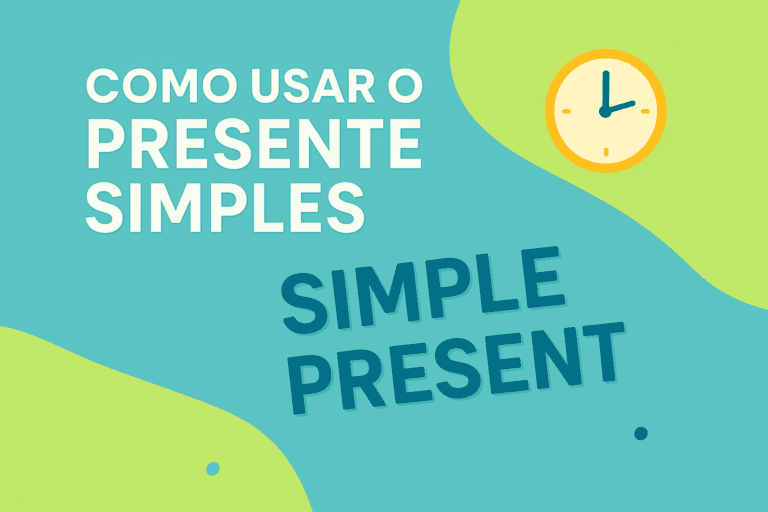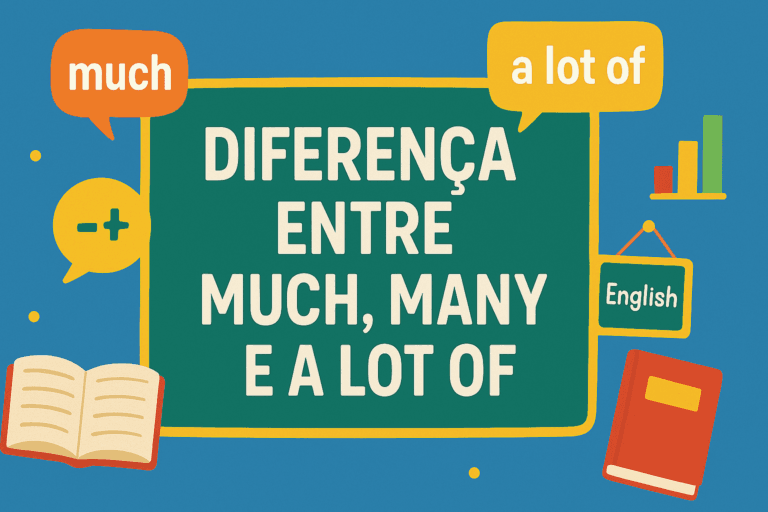Comparativos e Superlativos em Inglês: Como Usar de Forma Simples e Correta
Os comparativos e superlativos em inglês são essenciais para expressar diferenças entre pessoas, objetos ou situações. Seja para dizer que algo é “mais rápido”, “maior”, ou “o mais bonito”, dominar essa parte da gramática é fundamental para quem quer falar inglês com confiança.
Neste guia, vamos te mostrar como formar e usar essas estruturas com exemplos práticos e traduzidos, além de esclarecer as principais dúvidas.

O que são comparativos e superlativos?
Comparativos comparam duas coisas.
Exemplo: This car is faster than mine.
(Este carro é mais rápido que o meu.)Superlativos indicam que algo está no grau mais alto dentro de um grupo.
Exemplo: That was the funniest movie I’ve ever seen.
(Esse foi o filme mais engraçado que já vi.)
Como formar os comparativos em inglês
1. Adjetivos curtos (até 2 sílabas)
Para a maioria dos adjetivos curtos, adicionamos -er e usamos than após eles.
Exemplos:
small → smaller
My apartment is smaller than yours.
(Meu apartamento é menor que o seu.)fast → faster
This bike is faster than that one.
(Essa bicicleta é mais rápida que aquela.)cold → colder
Today is colder than yesterday.
(Hoje está mais frio que ontem.)young → younger
He is younger than his brother.
(Ele é mais novo que o irmão dele.)
2. Adjetivos longos (3 ou mais sílabas)
Para adjetivos longos, usamos more + adjetivo + than.
Exemplos:
beautiful → more beautiful
This place is more beautiful than I imagined.
(Este lugar é mais bonito do que eu imaginava.)expensive → more expensive
That hotel is more expensive than the other one.
(Aquele hotel é mais caro que o outro.)interesting → more interesting
This book is more interesting than the last one.
(Este livro é mais interessante que o último.)
Como formar os superlativos em inglês
1. Adjetivos curtos
Usamos the + adjetivo + -est.
Exemplos:
tall → the tallest
She is the tallest in the class.
(Ela é a mais alta da turma.)old → the oldest
That is the oldest building in town.
(Esse é o prédio mais antigo da cidade.)cheap → the cheapest
It’s the cheapest restaurant here.
(É o restaurante mais barato daqui.)
2. Adjetivos longos
Usamos the most + adjetivo.
Exemplos:
intelligent → the most intelligent
He is the most intelligent student.
(Ele é o aluno mais inteligente.)delicious → the most delicious
This is the most delicious cake I’ve ever eaten.
(Este é o bolo mais delicioso que já comi.)difficult → the most difficult
It was the most difficult question on the test.
(Foi a questão mais difícil da prova.)
Regras especiais e exceções
Alguns adjetivos têm formas irregulares no comparativo e superlativo:
| Adjetivo | Comparativo | Superlativo |
|---|---|---|
| good | better | the best |
| bad | worse | the worst |
| far | farther / further | the farthest / the furthest |
Exemplos:
This pizza is better than the last one.
(Essa pizza está melhor que a última.)He had the worst day ever.
(Ele teve o pior dia de todos.)
Comparativos de Igualdade
Use as + adjetivo + as para dizer que duas coisas são iguais.
Exemplos:
She is as tall as her brother.
(Ela é tão alta quanto o irmão.)This task is as important as the other one.
(Essa tarefa é tão importante quanto a outra.)
Dica extra para memorizar!
Adjetivos curtos: use -er e -est
Adjetivos longos: use more e the most
Irregulares: memorize as formas especiais
Para entender melhor a diferença entre os tempos verbais usados em comparações, veja também:
➡️ Simple Past em Inglês: Quando e Como Usar
➡️ Tempos Verbais em Inglês: Diferença entre Simple Present e Present Continuous
Se você quiser ampliar seu vocabulário para descrições, recomendamos também:
➡️ 20 Adjetivos em Inglês para Descrever Pessoas






